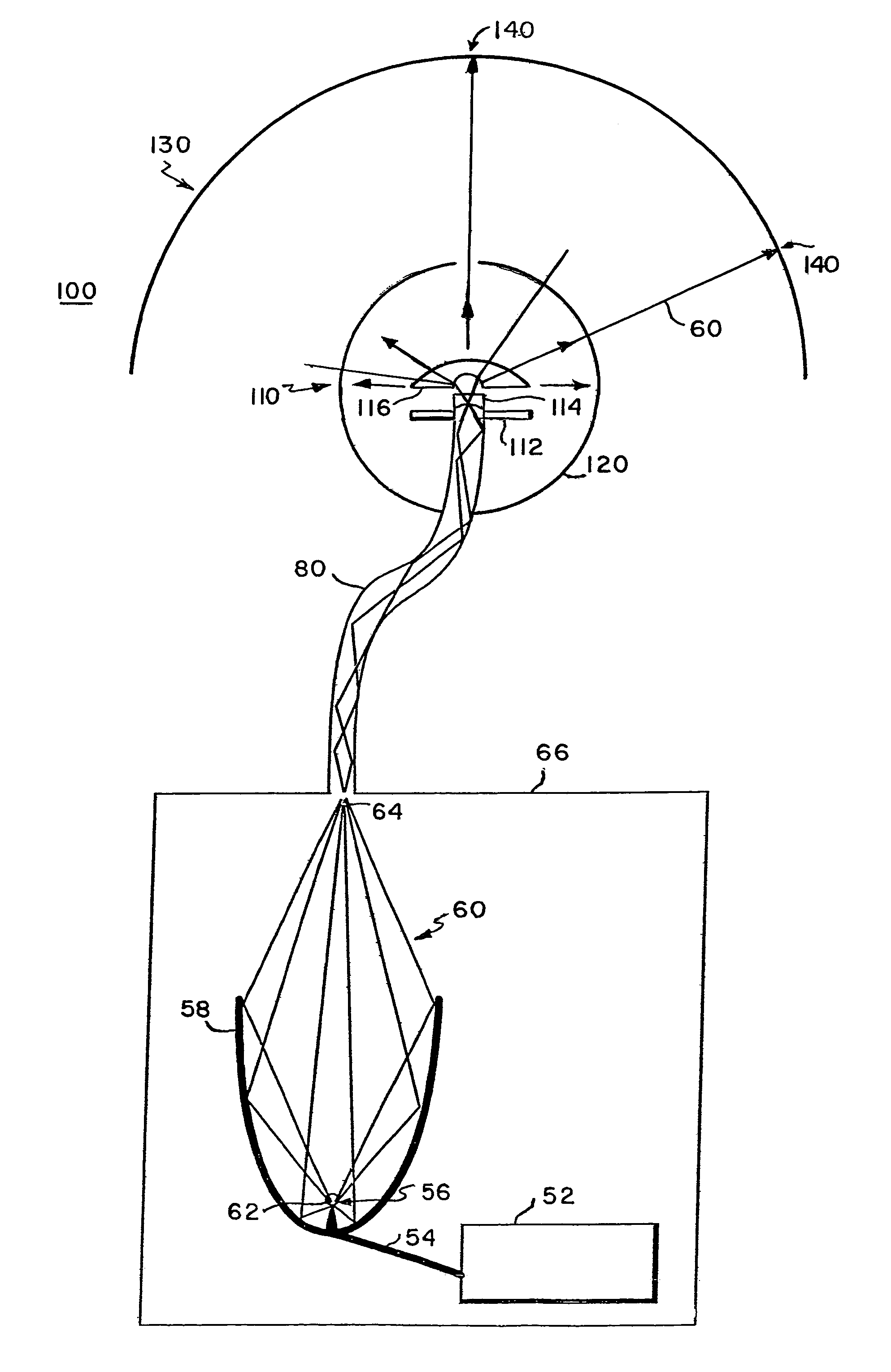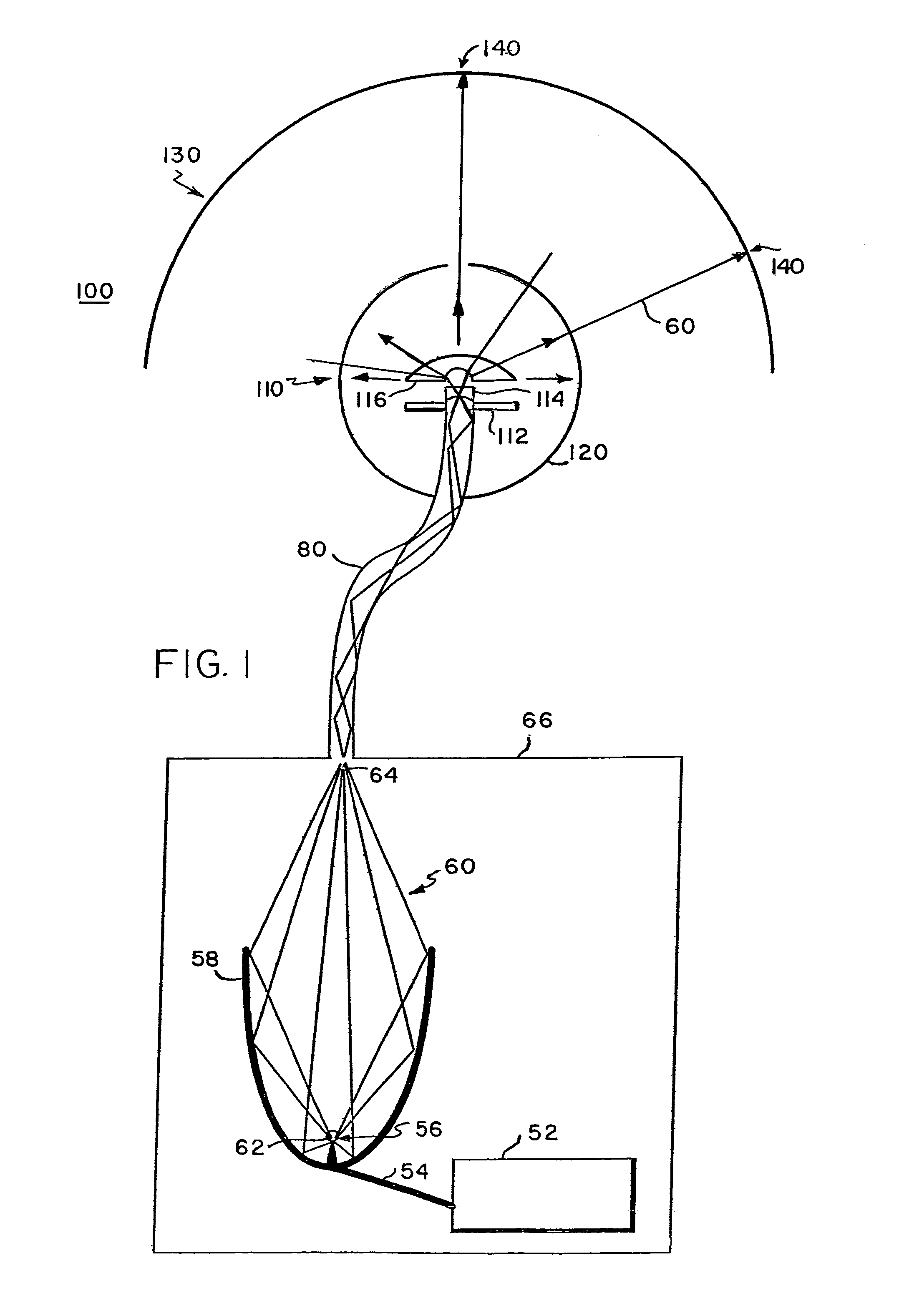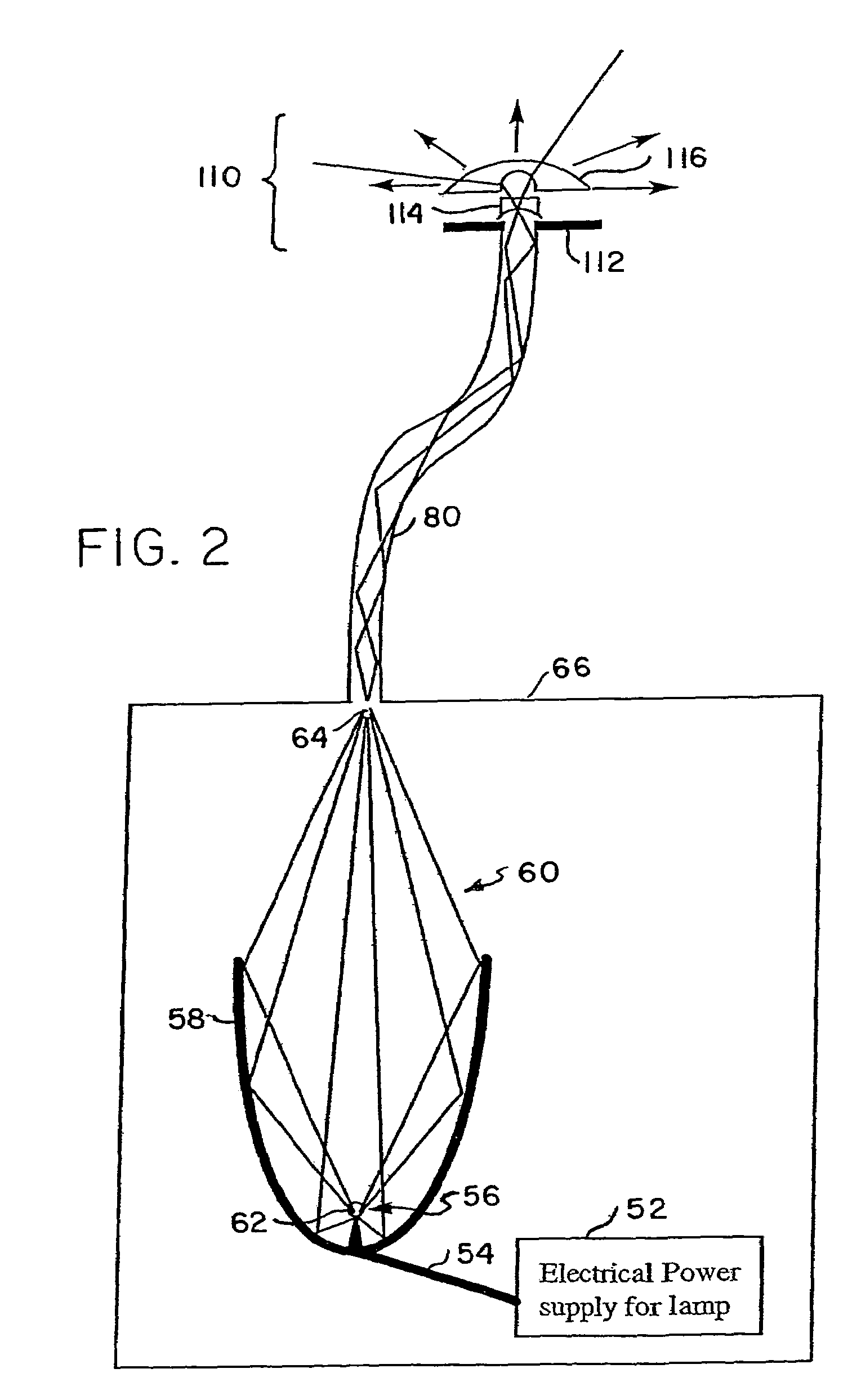Planetarium and point light source for use in same
a technology for planetariums and point light sources, applied in the field of planetariums, can solve the problems of poor image quality, thermal burn hazards for planetarium operators or audience members, and large planetariums are suitable for use in dedicated applications such as museum auditoriums, and are not practical in many educational settings such as schools and universities, and achieves the effects of convenient transportation and setup, high resolution, and convenient image projection
- Summary
- Abstract
- Description
- Claims
- Application Information
AI Technical Summary
Benefits of technology
Problems solved by technology
Method used
Image
Examples
Embodiment Construction
[0026]Referring now to the various figures of the drawing wherein like reference characters refer to like parts, there is shown in FIG. 1 a portable planetarium 10 wherein a point light source is generated by a point light source generator, e.g., a lamp, 56 which is mounted at a focus 62 of an elliptical reflector 58. Light generated by the point light source generator 56 is reflected off of the elliptical reflector 58 and is directed to a second focus 64 of the ellipse defining the curvature of the elliptical reflector 58. The concentrated light rays are collected into a light conducting conduit 80 having a proximal opening disposed at or near the focus 64. The light is transmitted through the conduit 80 and exits through the distal end in a symmetrical cone of light having substantially uniform light intensity throughout the cross-section of the cone of light. The cone of light exiting the distal end of the light conducting conduit passes through one or more optical deflecting dev...
PUM
 Login to View More
Login to View More Abstract
Description
Claims
Application Information
 Login to View More
Login to View More - R&D
- Intellectual Property
- Life Sciences
- Materials
- Tech Scout
- Unparalleled Data Quality
- Higher Quality Content
- 60% Fewer Hallucinations
Browse by: Latest US Patents, China's latest patents, Technical Efficacy Thesaurus, Application Domain, Technology Topic, Popular Technical Reports.
© 2025 PatSnap. All rights reserved.Legal|Privacy policy|Modern Slavery Act Transparency Statement|Sitemap|About US| Contact US: help@patsnap.com



